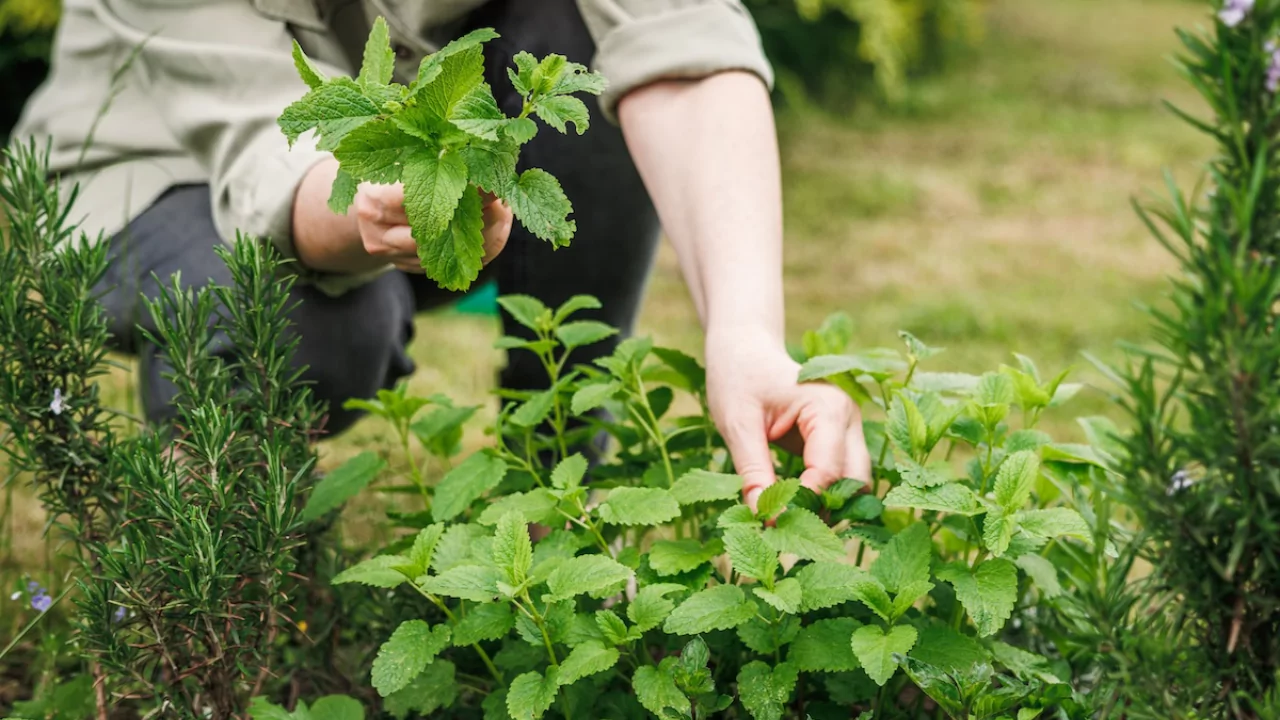
Interested in growing your own herbs outdoors? Herbs possess a special charm and fascination. Throughout history, people have cultivated herbs to enhance the flavor of food, add fragrance to a household, and for medicinal purposes. Lavender was often used by Medieval Europeans who believed it warded off plagues, and came with some anti-microbial benefits.
Furthermore, chamomile has been utilized for centuries as a means to soothe anxiety and promote sleep. In addition to their soothing properties, herbs served as dyes—such as woad, which early Britons used to dye their skin blue prior to battles.
Modern gardeners grow herbs for their cooking and culinary uses. Regardless of your motivation to start an herb garden, the experience is highly rewarding and effortless. Herbs rank among some of the easiest plants to cultivate.
Herb Garden Site Selection
While selecting a location for an herb garden, individual plant requirements must be kept in mind. Almost all Mediterranean herbs flourish under full sun like sage, thyme, basil, rosemary, tarragon and oregano. Woodland herbs do suffer in hot temperatures but prefer shade on warmer days. Mint, lemon balm, chervil, chamomile, cilantro, and parsley fall under this category.
Most herbs do not tolerate damp roots, but most do tolerate poor soil. Cultivating an herb garden requires amending the soil with compost or manure, which lightens clay soils while enhancing drainage. In sandy soils, compost and manure helps retain nutrients and moisture.
Herbs are not picky about their planting location. You can integrate some into flower beds. Many herbs boast fine foliage and fragrant flowers, making them wonderful additions to perennial beds. Some herbs will attract bees, while other herbs will help to repel pesky deer.
Another option is the vegetable garden. Some gardeners swear tomatoes taste better when basils are grown beside them. Regardless of the truth in that statement, having the two together makes it much easier to harvest when marinara sauce is the goal.
Herbs are also remarkably well suited for containers. For an appealing kitchen garden, place pots around your kitchen door. With just a few steps, savory additions to your cooking pot are within reach.
Easy Herbs to Grow Outdoors
Basil. (Ocimum basilicum). Highly regarded for its tender, aromatic flavor, this herb is added to pesto, marinara sauce, or salads. With proper indoor seeding, basil matures quickly.
Grow basil in full sun and moist, well-drained soil. Pruning seedlings promotes bushy growth, and keeping them from flowering preserves flavor. Try ‘Sweet basil,’ ‘Spicy Globe,’ ‘Dark Opal’ or ‘Chocolate’ for variety.
Chives. (Allium schoenoprasum). This perennial plant in the onion family blooms from bulbs. Mild in flavor, chives pair well with salads and eggs. Full sun supports their growth in early spring.
In addition to the stalks, their purple flowers are also edible. Divide chives every 2 to 3 years and cut them back in mid-summer to rejuvenate growth. How to grow chives.
Cilantro. (Coriandrum sativum). Known as coriander, it garners strong reactions with people either loving or hating it. Adding cilantro gives a refreshing taste to salsas and salads. This tender annual thrives in moist soil and cooler temperatures, but will bolt when it heats up.
Dill. (Anethum graveolens). Once planted, it is likely that you will never have to sow dill again. This is an annual herb that self-sows prolifically. If you leave a few seed heads on the plants, self-sowing will ensure a crop the following spring. For best flavor, grow dill in full sun and keep the soil moderately moist. How to grow dill.
Rosemary. (Rosarinus officinalis). This plant is an evergreen perennial that is evergreen in warmer climates, but dies out in the north. Bring it indoors before the first frost to overwinter it. Rosemary thrives in full sun and slightly drier areas. How to grow rosemary.
Thyme. (Thymus). Thyme does best with neglect. Plant it in full sun and water sparingly, and this herb will reward you with rampant growth. It is best to cut it back in mid-summer.
The common culinary variety is thymus vulgaris, but other varieties worth trying include lemon, French, and English thyme. Learn how to grow thyme.
Basic Herb Care and Harvest
Most herbs are very easy to maintain. Thyme, mint, and oregano are examples of perennial herbs that can quickly take over one’s garden. Eventually, they tend to become tough, woody and shrub-like. To solve these issues, cut back these herbs at least once per season, and to improve vigorous, young growth, divide these herbs every two to three years.
Only apply light dosages of fertilizers. A small amount of compost applied at the beginning of the season is generally adequate. Excessive fertilizer causes quick and overly lush growth that will lack flavor, and will be more prone to disease and pest issues.
Small leaves are the best when cutting herbs. It is best to cut herbs in the morning and use them fresh, or to hang them to dry.